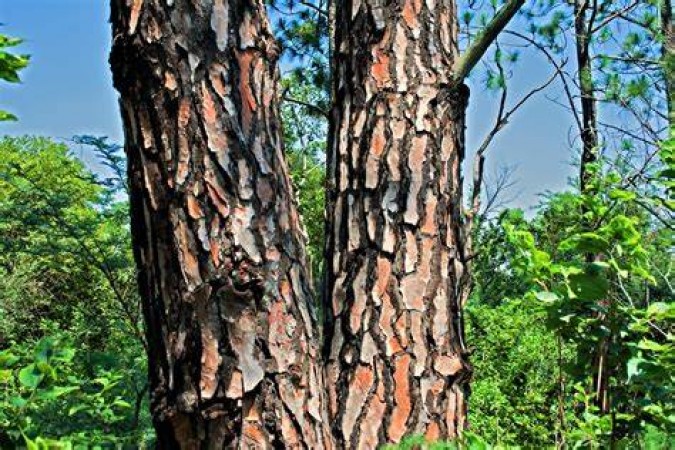
Tree bark, often overlooked in the grandeur of forests and woodlands, plays a crucial role in the life of trees and their ecosystem. This unassuming outer layer of a tree trunk serves as a protective shield, a communication hub, and a survival tool. Let's delve into the fascinating world of tree bark and uncover its extraordinary adaptability.
Tree bark is the first line of defense against environmental factors. It shields the tree from harsh sunlight, extreme temperatures, and moisture. Its insulating properties help regulate the tree's internal temperature, preventing damage from freezing winters and scorching summers.
Bark acts as a fortress, safeguarding trees from insect infestations and diseases. Certain tree species even produce chemical compounds within their bark that repel pests, demonstrating nature's ingenious defense mechanisms.
Bark is incredibly flexible, allowing trees to grow and expand without breaking. As a tree increases in girth, its bark accommodates this growth by stretching and cracking in patterns that are unique to each species.
Intriguingly, trees possess the ability to heal wounds in their bark. When damaged, they initiate a process of compartmentalization, sealing off the injured area to prevent the spread of infection or decay. This remarkable self-healing mechanism contributes to the longevity of trees.
Bark is not just a passive covering; it's a communication hub. Trees release volatile organic compounds (VOCs) through their bark, sending signals to neighboring trees. These chemical messages can warn of impending threats, such as insect attacks, allowing nearby trees to prepare their defenses.
The textured surface of bark provides a habitat for various organisms, including insects, mosses, and lichens. This micro-ecosystem contributes to the overall biodiversity of forests and promotes a healthy balance within the ecosystem.
Throughout history, tree bark has been used by humans for various purposes. Indigenous cultures have employed it for shelter, clothing, and as a source of medicine. The inner bark of some trees, like the paper birch, was even used for writing in ancient times.
Today, tree bark continues to find applications in the production of natural remedies, tannins for tanning leather, and even as an eco-friendly alternative to traditional building materials in some regions.
As climate change accelerates, trees face new challenges. Altered weather patterns, invasive pests, and diseases pose threats to tree bark's adaptability. Conservation efforts are crucial to ensure the survival of many tree species.
The widespread removal of trees for urbanization and agriculture disrupts the natural processes that tree bark supports. Preserving forests and sustainable logging practices are essential for maintaining the delicate balance of ecosystems.
In conclusion, tree bark is far more than just a tree's outer clothing. It's a dynamic, adaptable, and essential component of a tree's life. From protecting against the elements to fostering communication and cultural significance, bark plays a multifaceted role in the world of trees. As we navigate an era of environmental challenges, let's not forget to appreciate the unsung hero that is tree bark.
Grapeseed Oil: Your Secret to Healthy Hair